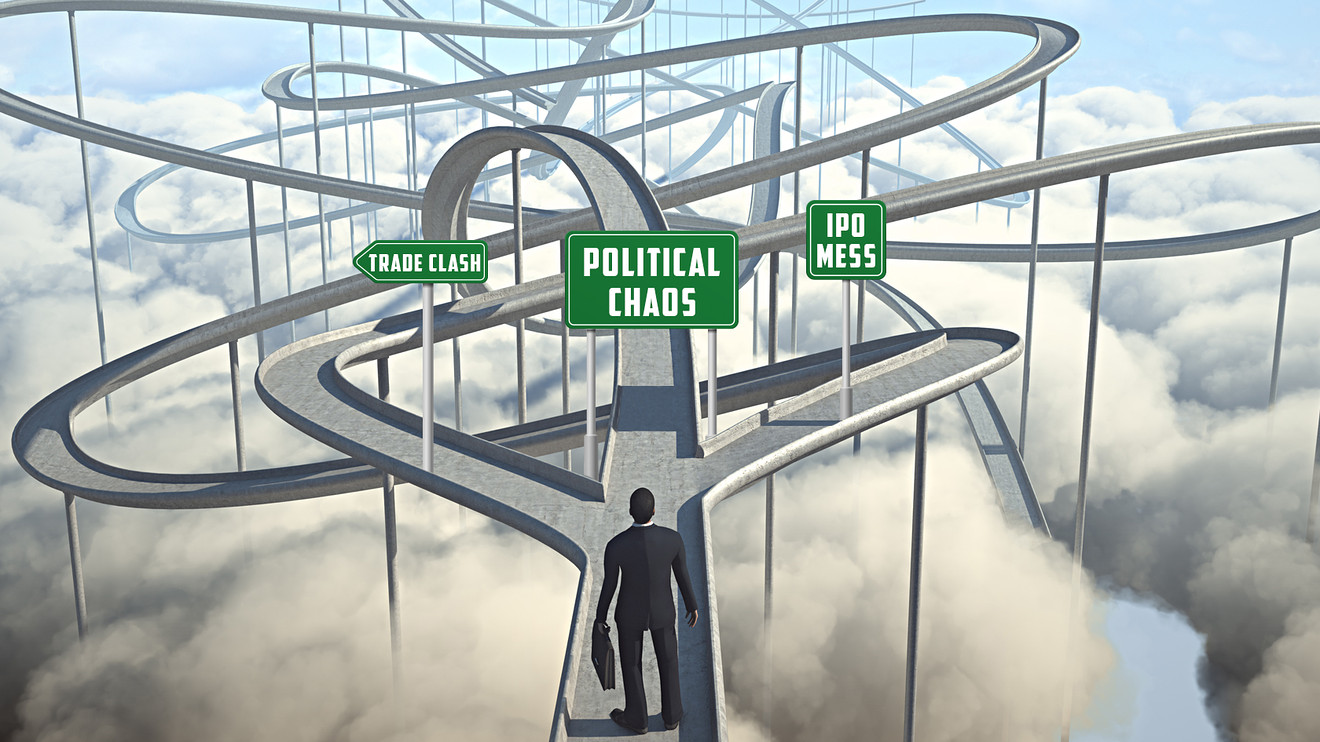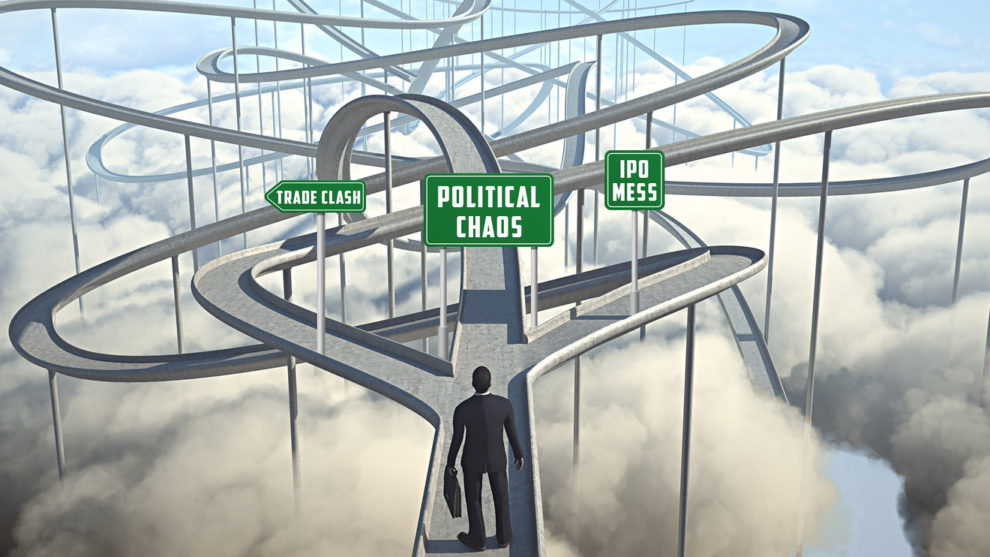
The pathway forward for Wall Street and the value of risky assets is becoming more perilous.
What began arguably with a momentary pivot in investor appetite from “growth” stocks — those stocks with a propensity to rise steadily based on growing sales and profitability – toward those viewed as undervalued by some metric, has morphed into something seemingly more lasting and more reflective of a market that is struggling to scale its latest wall of worry.
It is a market that is increasingly sensitive to geopolitical developments, for example the Trump impeachment enquiry begun this week, as well as a litany of other technological and sectoral risks that could prove too much for a sluggish economy and a listless stock market.
Take Netflix Inc. NFLX, -0.09%, the video-streaming service that has been a darling among investors, but lately has seen its shares lose more than 10% in September and turn negative for 2019 as competition in the sector has increased. That marks the worst performance by a wide margin this month and year among the so-called FAANG stocks, which also include Facebook Inc. FB, -1.67%, Amazon.com Inc. AMZN, -0.83% Apple Inc. AAPL, -0.49%, and Google-parent Alphabet Inc. GOOG, -1.31% GOOGL, -1.32%.
Growth stocks like Netflix, and the wider FAANG complex, have been in a nearly uninterrupted bullish trend for the past decade. A rotation, however, appears to be at hand, with measures of growth stock performance this month trailing value strategies handily. The Russell 1000 Growth RLG, -1.00% is down 0.9% so far in September, compared with a Russell 1000 Value Index RLV, -0.16% that has climbed almost 3%, marking the first time value has outperformed growth for the month since June, according to FactSet data.
Read: Value rotation signals a rebound in global economic growth, not a recession, analysts say
The shift toward value stocks, however fleeting it may be, has come as bond yields have been worryingly low for a stock market that isn’t far from all-time highs. The 10-year Treasury yields TMUBMUSD10Y, -0.91% 1.678% late Friday in New York, while the 2-year Treasury note TMUBMUSD02Y, -1.41% was at 1.626%, marking the second straight weekly slide for U.S. Treasury yields and the sharpest two-week skid since the period ended Aug. 16, according to Dow Jones Market Data. Pundits have suggested that investors are turning to assets that offer safer returns during times of economic stress.
Beyond tectonic moves in the value-growth narrative, the once-highflying market for initial public offerings has appeared to come off the rails, with Peloton Interactive Inc. PTON, -2.02% on Thursday putting in the second-worst initial decline of any IPO that has raised at least $500 million this year, according to Dealogic data. Poor debuts for IPOs have often presaged, or been indicative of, more worrisome developments in the market.
Peloton’s woeful debut came as work-space sharing company We Co. WE, +0.00% pulled its plans to list its stock on a public exchange and Endeavor Group Holdings Inc. EDR, +0.00% postponed its planned offering also after Peloton’s woes.
A popular way to measure IPO performance, the Renaissance IPO ETF IPO, -2.65% is down 6.9% this week, marking its worst weekly decline since the week ended Dec. 21, 2018. It’s also the worst monthly decline, down 8.7%, for the exchange-traded product since December, according to FactSet data.
However, it’s worth noting that the Renaissance ETF is still up nearly 20.2% so far this year, outstripping the year-to-date gains for the Nasdaq Composite Index COMP, -1.13%, the S&P 500 index SPX, -0.53% and the Dow Jones Industrial Average DJIA, -0.26%
WeWork-parent We Co.’s IPO postponement has been driven by investors pushing back against companies with high valuations in the private markets despite heavy losses or meager profits.
Read: IPO market has begun pushing back on growth-at-all-costs private companies
Valuations may also come into focus when investors consider third quarter earnings from American corporations in October which may underscore the issue of an earnings recession.
The market overall has been stuttering for the past year, with the Dow gaining a meager 1.4% over the 12 months, the S&P 500 up 1.6% and the Nasdaq, weighed down by many of those growth names, down 1.3% over the same period.
It isn’t clear that the market has any real impetus to cruise much higher in the next three months.
The U.S – China trade dispute and the wider geopolitical challenge posed by China’s growing economic, technological and military power may present the biggest hurdle for the market’s ascent.
For example, for the second week in a row, a trade war related headline capsized a Friday climb for the main U.S. equity benchmarks. This week, it was reports that the White House is weighing limiting investment in China. Last Friday, markets headed down hill on reports that a China delegation canceled a trip to Montana farms.
On top of all that, a raging impeachment inquiry against President Trump, centered on allegations that the 45th U.S. president pressed the leader of a foreign country, Ukraine, to help him undermine a domestic political competitor, has drawn outsize attention.
The Trump impeachment inquiry is, perhaps, the most significant for markets in some ways, because of how it may influence the political will for a Sino-American trade dispute resolution and how it could influence the likely outcome of next year’s U.S. presidential election.
It all seems like a giant wall of worry that the market has climbed before. However, there is a point at which a wall of worry becomes a wall of fear. On Wall Street, fear may be the only thing that trumps greed.
See: How the Fed’s funding struggles highlight the fragility of Wall Street confidence




